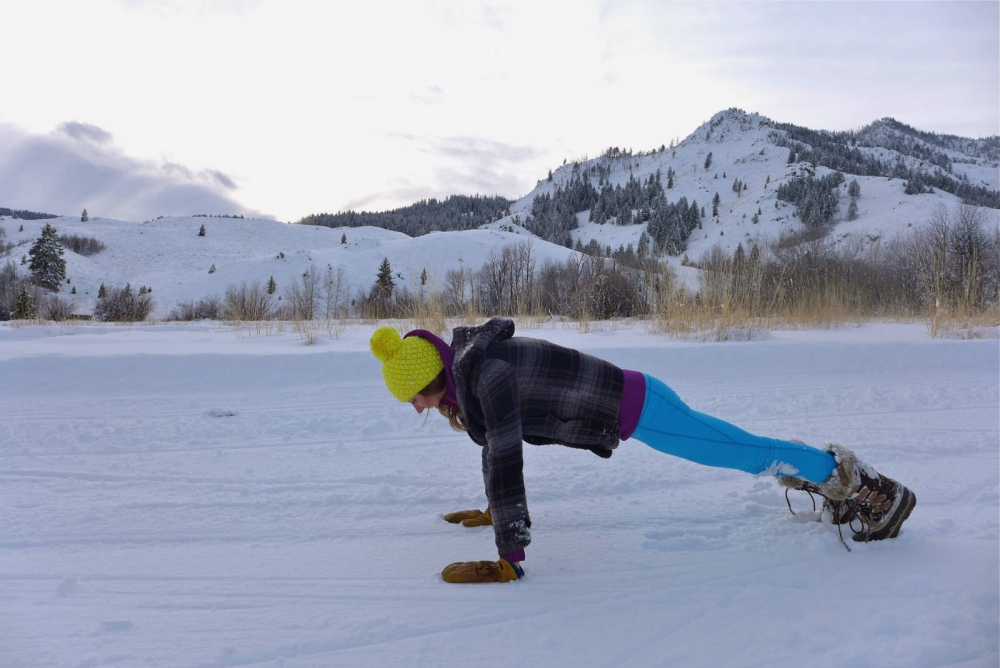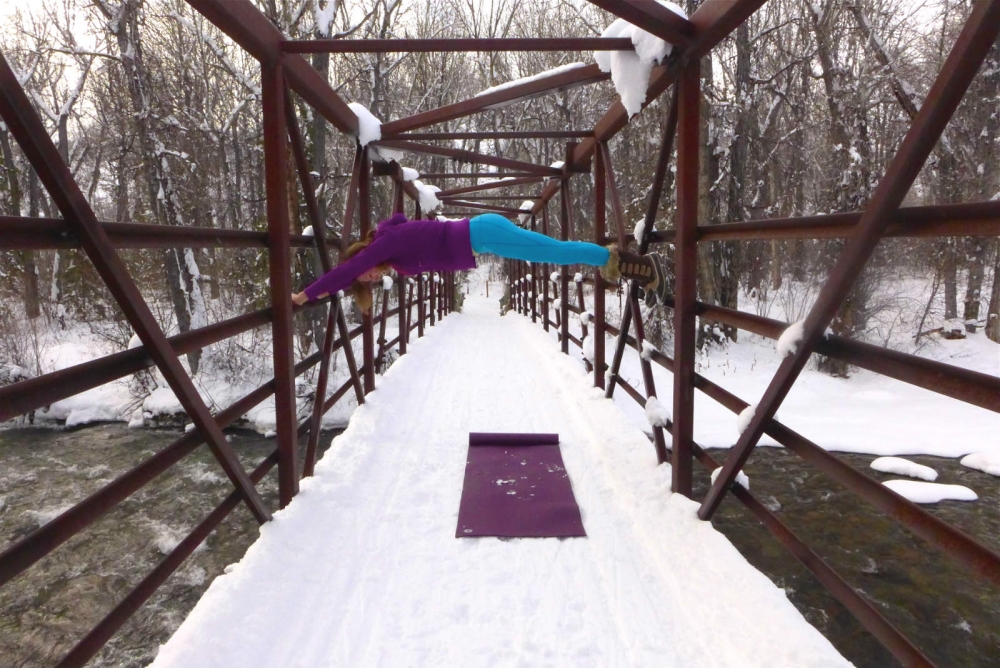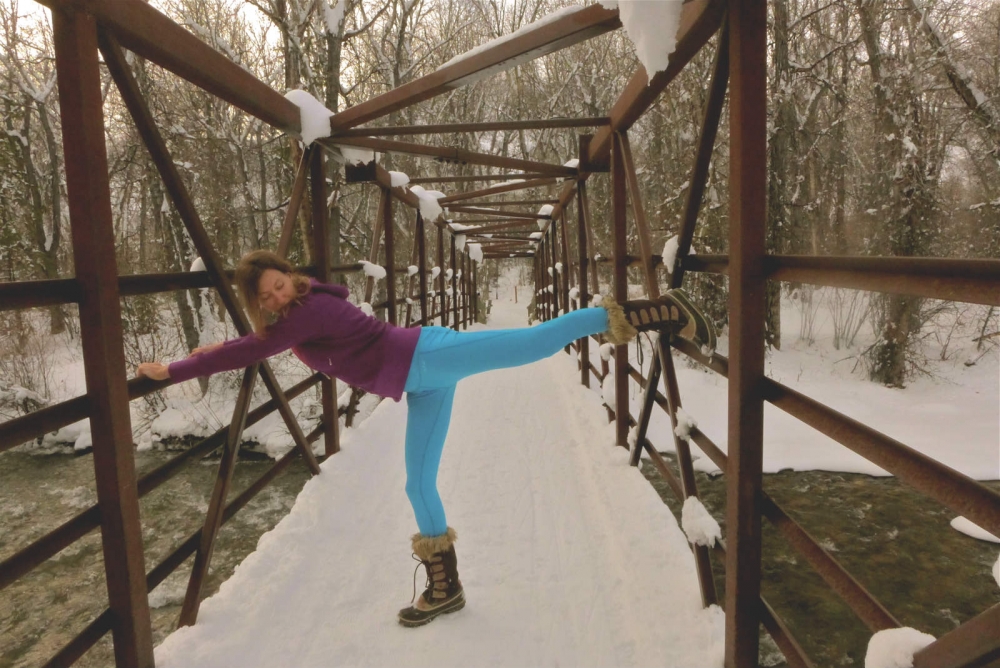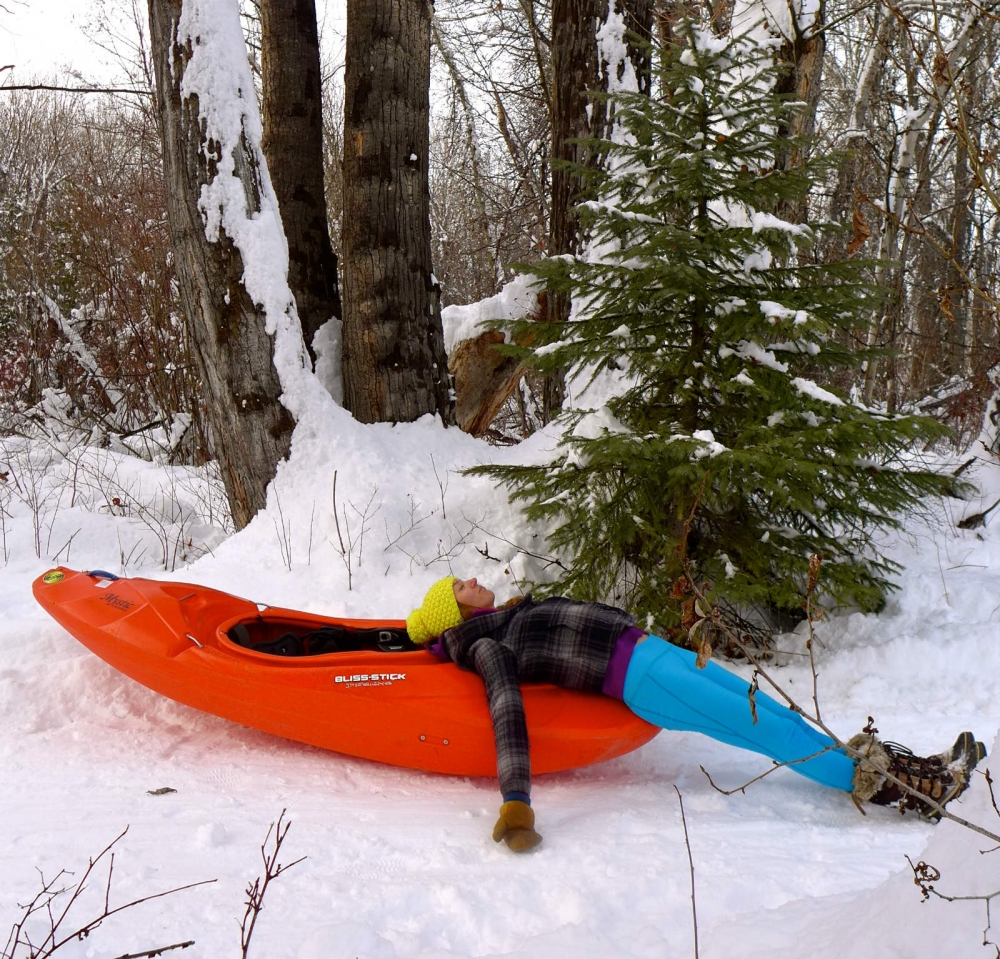There is that indescribable feeling. Sometimes, we get it from navigating a challenging rapid, from finding ourselves surrounded by stunning landscape. Other times, it’s the warmth of good friends playing guitar by a campfire under the endless stars. If we really get down to it, that feeling is being completely present.
Kayaking can be a sort of addiction. There’s a time when we chase the highs day after day. We experience literal withdrawals and consequential off-the-water crankiness, much to the merited non-sympathy of family and friends. We know that nothing makes us feel as much like ourselves as being in the river. It’s in its crashing waves that we’re flooded with the awe-inspiring feeling that we’re so small, and simultaneously an integral part of something so much bigger. Simply put, the river inspires a state of complete presence.

As a kayaker, I’m most present in these extreme moments. Moments when my environment demands my complete attention, and to accomplish that my body and mind are forced to focus and flow with their surroundings. But when the water is low, the snow is deep, or a trip isn’t on the horizon, I’ve grown accustomed to grounding myself and realizing presence through yoga.
There are over 100 different types of yoga that are interconnected physical and mental practices. The roots of yoga are primarily credited to the text, The Yoga Sutra, written approximately 2000 years ago by the ancient Indian sage Patanjali. Journalist Mara Carrico describes The Yoga Sutra as, “a kind of philosophical guidebook for dealing with the challenges of being human.”
The discipline of physical yoga is called Hatha Yoga and was first developed to literally exhaust the body and the nervous system so that it could sit for meditation, which could be described as “mental yoga.”

Hatha Yoga is the yoga we are most familiar with in Western culture: it makes us feel like we’re doing something. Holding a Chaturanga, or a low plank push-up position, makes us sweat and brings us into the present moment with its challenge. Our core muscles grow strong, our arms toned, but something else happens, too. We begin to notice our reactions to a situation that is uncomfortable—the negative grumbles, the irrational distaste for the instructor, and the hope for karmic retaliation.
But with time, we learn to notice our thoughts as simply thoughts, and in that recognition, we are able to shift our perception of the present moment to something more joyful, even if it’s hard. The situation becomes sensational instead of emotional, and as it is impermanent—we aren’t going to be in Chaturanga forever—we realize that we have the option to either get lost in the spin of a negative mind or fully engage and grow within our sufferfest.
On the river, we learn to find peace in chaos. If we don’t, we either get lucky or we get worked.
Similar to kayaking, in yoga you have to put in your work. Eventually, we realize the work is the reward, and the journey is the destination. Practicing eddy turns or sun salutations is fun, but sometimes it may seem monotonous. In the end, it’s all about showing up. Once we force ourselves off the couch, and into that dry top or through the doors of that class, we improve. Whether it’s recognized immediately or much later, we gain valuable knowledge about our bodies, our capabilities and ourselves. We are building muscle memory and training the mind to be fully present in comfort and discomfort, in stillness and movement, in transition and balance for a better reality on and off the yoga mat, and on and off the river.

For paddling, in addition to a growing feeling of focus and presence in and out of a boat, yoga can be a key tool to build strength, prevent injury and maintain flexibility and flow. According to the American Osteopathic Association, the benefits of yoga go beyond that to include improved respiration, energy and vitality, maintaining a balanced metabolism, weight reduction, cardio and circulatory health, an overall improved athletic performance, as well as reduced stress, anxiety and insomnia. So, why not, right?
Here are four yoga poses that help maintain strength and flexibility specific to kayaking and rowing muscles. They can be done on any riverbank, campsite, hotel floor or truck stop. To begin, breathe. Float the eyes closed for a moment and draw attention to your breath. Simply by noticing it, it will grow to fill its potential.

Plank: In a standard push-up position, align the hands under the shoulders and root through the palms. Feel energy in the entire back and, as toes are tucked, push heels down while simultaneously extending through the crown of the head, creating a sensation of growing in two directions. Plank is a key pose for building shoulder and core strength for boaters. If the integrity of the pose is being compromised, drop the knees. If you feel like a challenge, inhale the right hand off the ground extending forward and the left foot off the ground extending back while keeping the hips even and square to the ground. Switch sides.



Eagle: From standing, inhale arms to the sky. As you exhale, bend the knees and wrap the right arm under the left, and the right leg over the left. The right toes can remain on the ground for balance, or they can fully wrap around the left leg. Play around with raising and lowering the elbows to feel different stretches in your back and shoulder muscles. Breathe into sensations that feel tight. Switch sides.

Pigeon: This pose focuses on the hip flexors and quads. From downward facing dog (body in a V shape, palms and feet rooted on the ground), inhale right foot to the sky. As you exhale, sweep the leg and body forward, placing the right knee inside the right hand, place the shin on the earth and release the left leg extended straight behind you. Line up the right heel with your left psoas muscle. Inhale, plant the palms and lengthen the spine. Feel the opening of the left quad and right glute. Exhale, recline forward into sleeping pigeon. Switch sides.

Supported Fish Pose: You can do this one over the bow of your boat (or a longer, firm pillow/ bolster). Sit down and line up your back and hips with the bow of your boat or the edge of a bolster. Extend your legs straight out in front of you. Engage the core and slowly lower the back onto the boat or bolster. Release the arms to the side, palms facing up. Boaters can get tight pec muscles, which in turn can create a slumped posture in which the shoulders are more prone to injury in movement. Opening up the chest muscles allows the body to fall back into natural and best alignment. And it feels amazing. Your job is to breathe, relax and let gravity do the work.



Revolve Chair: While standing, inhale arms overhead. As you exhale, shift the weight into the heels and bend your knees, shifting your hips back as if you were sitting in a chair. Draw the hands to hearts center, inhale to lengthen through the crown of the head and exhale as you twist to the right, allowing the outside of the left elbow to find the outside of the right thigh. With every inhale, extend through the spine and with every exhale, find a comfortable deepening of the twist, first through rotation of the belly, then chest, then neck, as eventually, your gaze is toward the sky. If available, open the arms so that one shines up and one shines toward the ground. Being mindful of our boater back muscles is essential. Gentle twists are a great way to keep healthy flow within heavily worked muscles.

Keep in mind, yoga is not supposed to hurt. Pain is the body’s acknowledgement to modify. If something hurts, take a step back to evaluate what’s comfortable or simply opt out. End your practice with savasana by lying on your back with your legs and arms out long and relaxed, close your eyes and breathe naturally. Relax your body and mind for at least one minute, or until you’re ready to move again.
Editor’s note: All photos courtesy of Cara Frost unless otherwise noted.